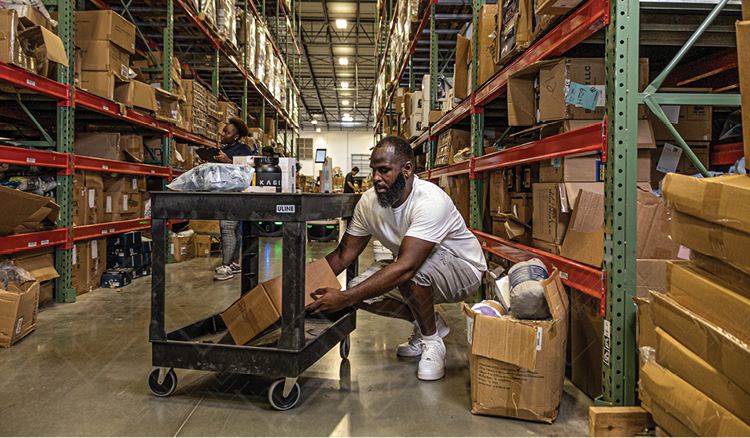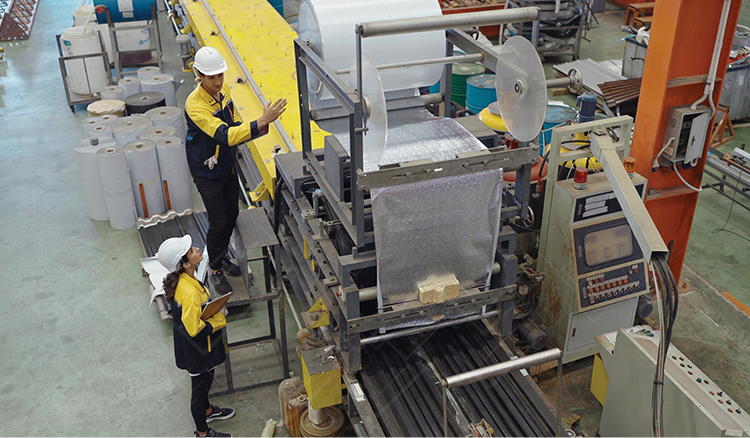Understaffing Problems and How to Avoid Them
So you find yourself understaffed. It happens to everyone, especially when it’s hard to find workers and the labor market is competitive. We at Veryable know that staffing is a huge issue, because we help companies connect with workers every day through our on-demand labor marketplace. While we are not a traditional staffing solution, we do know plenty about this challenge, and we’re going to keep this article focused on the signs of understaffing and how to fix the problem.
In this article, you’ll learn the common problems caused by understaffing, how to stop the cycle in your business, and immediate steps you can take to get back where you need to be.
Content:
- Common problems caused by understaffing
- How to stop understaffing your business
- Making the transition away from understaffing
Common problems caused by understaffing

The problems with understaffing are probably all too familiar to you. We’re going to talk about three main problems caused by being understaffed:
- Being rushed to find workers
- Increased overtime for employees
- Falling behind target on KPIs
When you’re understaffed, you end up hurrying to find workers. And when you’re desperate to fill holes in your headcount, you end up hiring workers who you know aren’t ideal for your business.
You also end up asking for more overtime out of your current workforce, which leads to turnover. This only makes hunting for workers even more urgent.
As you search for workers to fill the gaps, you fall behind on key performance indicators because you lack the workforce required to operate effectively.
Being understaffed is an urgent problem for your business, so below we’ll look at ways to fix it before it spirals out of control.
How to stop understaffing your business
You can catch back up to where your headcount should be and avoid getting there again by aiming for a few key goals:
- Improve retention
- Find the right workers the first time
- Find faster ways to get workers
Improve retention by focusing on overtime, opportunity, and engagement
If you improve retention, you won’t have to search for workers as often. That’s clear enough, but what makes a meaningful impact on retention?
The obvious but overlooked fix is paying higher wages. It seems counterintuitive, but higher wages could actually improve the productivity and profitability of your business if you look at the bigger picture. That’s because the higher output from more productive workers can outpace the increased wages required to attract them.
Beyond pay, there are other factors that affect retention, such as the amount of overtime asked of employees, opportunities for advancement, and the level of engagement fostered in the work environment.
How overtime affects retention
Some workers seek out overtime, and others do not. But even the ones who seek overtime have their limits, and too much of it will wear them down eventually. Employees will start looking elsewhere for employment or just quit due to burnout from excessive overtime. So be sure to avoid relying on overtime too often to accomplish your work.
How opportunities for advancement affect retention
Likewise, opportunities for advancement are an important factor affecting retention. Workers that are learning and growing as a result of working for your company are more likely to stick around and continue their trajectory, because they feel their hard work is being rewarded with a path towards work they would prefer. Offering training or apprenticeship programs is one way to do this. You should outline paths for progressing in the company, so that employees know where they stand and what opportunities are open to them if they want to strive toward them.
How engagement affects retention
The final way we will discuss improving retention is fostering engagement. Opportunities like the ones mentioned above are one way to foster engagement. You should also ensure your managers are walking the floor and getting involved with the workers on a day-to-day basis. You should be looking for ways to improve the workplace and listening to employees’ ideas. You’ll hear what’s making their work harder than it has to be, and you might even pick up some clues on how your operation could run more efficiently. It’s a win-win situation to be involved and maintain communication and engagement with employees.
Find the right workers the first time
You have to find workers who you want to keep around to set yourself up for success. This is hard to do, and nobody can hire the right workers 100% of the time. But there are ways to increase your odds of finding workers who will stick around.
One of the best ways to do this is to have someone in your company involved in the selection of workers. Your team knows your operation the best, so they would know what skills and attitudes to look for in a potential employee. The more you can involve someone from your team in the resume review or interview process, the better.
While this is more difficult to do in traditional staffing, many on-demand staffing companies and Veryable’s on-demand labor platform make it easy to see insights into each worker’s skills, history on the platform, and ratings from other businesses.
Find faster ways to get workers
You’ve most likely heard of faster ways to find workers than job boards, such as temp staffing. Some of these companies offer temp-to-perm options, meaning you can hire someone you like after they’ve worked with you through the temp agency. This typically comes with an associated cost in the form of a conversion fee. These are good options for when you know you need to hire more full-time employees, and you’ll have enough work for them to do consistently throughout the year. But maybe you haven’t heard of the newcomers to the scene like on-demand staffing companies, or Veryable’s on-demand labor for manufacturing and logistics. These companies are even faster at finding workers, but are not primarily trying to help you find full-time workers.
These new platforms offer you a way to quickly post work opportunities and connect with workers who are looking to pick up short-term work. On-demand companies can help you get by with some extra help while you fill the gaps in your FTEs with traditional staffing. However, the main advantage of using on-demand solutions comes after you’ve filled the headcount needed for your operational baseline. For example, you could use an on-demand labor solution like Veryable to build a flexible extension of your workforce called a labor pool, so that when your baseline operational level of workers isn’t enough, you can quickly scale to match demand.
Making the transition away from understaffing

If you find yourself understaffed and need to fill your headcount permanently, consider amping up your efforts on job boards or finding a staffing agency to assist you. If you don’t need people permanently, an option like on-demand labor will work for you. Once you’ve got the minimum amount of full-time employees needed to meet your lowest average demand, you can use on-demand labor to build a flexible extension of your workforce for matching your capacity to demand in real time.
Read more about how on-demand labor enables you to worry less about being understaffed and accomplish more by matching capacity to demand.
Previous Posts
How Policy Constraints, Not Just Production Bottlenecks, Threaten Your Bottom Line
The Future of Manufacturing and Logistics
Create a free business profile today to explore our platform.






